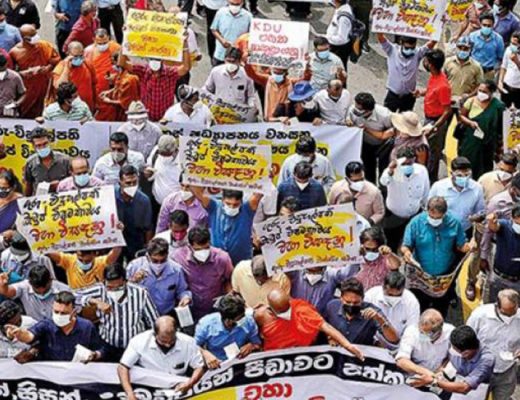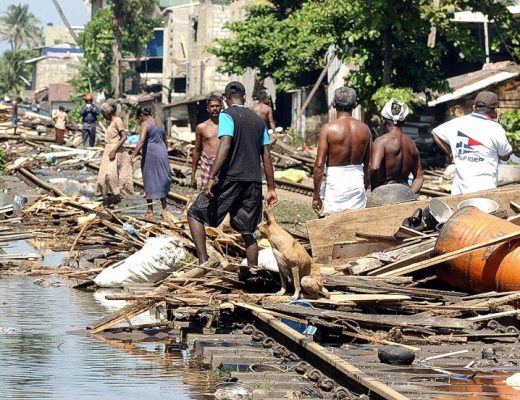The writer experienced an extraordinary situation in the middle of the night in January 2021. The writer’s driver came up to his bedroom and knocked on the door at around 1.30 am. The writer considered it as a rare occasion because the driver usually does not come upstairs once the writer goes to bed. As the writer’s wife was in London, the driver decided to sleep in the room next to the pantry, for the writer’s protection.
The driver complained about a severe pain in his lower abdominal area. The time was around 1.45a.m. In his half-asleep, the writer was confused as to what he should do. With the help of a neighbour (driver’s friend), the writer drove him to the Neville Fernando Teaching Hospital at Malabe. During the Yahapalana regime this Hospital became a state-run hospital after a widespread controversy.
Around 2.15 am the writer reached the Neville Fernando Hospital. Naturally, in the early hours of the morning there were hardly any patients at the hospital. We saw someone seated at the reception area, and as we walked towards him, a nurse came rushing from the OPD and instructed all of us to go out. We were subjected to a barrage of questions to ascertain if we had any symptoms of Covid-19. Once our answers indicated that nothing was amiss the nurse took our body temperature.
We were then requested to go back to the reception area and speak to the person at the reception, which was protected with polythene covers. This was because of the precautions taken by the Hospital against the Covid-19 pandemic. At the reception area, the writer too had to give his particulars along with the patient’s. The writer’s NIC too had to be computer screened, from a special aperture that covered the registration area.
Finally, the patient and the writer were directed to the OPD where a doctor took down all the patient’s details. The patient had to be subjected to a PCR test before being admitted to a surgical ward. The patient was given some drugs to ease the pain, while a scan of the patient’s lower abdominal area awaited. The scan results indicated that two kidney stones (renal calculi), which were rather large were blocking his urinary tract.
The patient has had a previous experience of having renal calculi. A former X-ray showed two stones just below the kidneys. He decided to treat himself with a local herb called (Akkapana) by consuming it as a salad and drinking liquidised ‘Katu Aartha’–soursop – a local spiky fruit recommended by an Ayurvedic native doctor to get rid of kidney stones. Strangely enough, one of the stones came out without the driver’s knowledge when he passed urine. The other stone was lodged in his system.
Still, the driver did not bother until he experienced excruciating pain again in the middle of the night this time. The kidney stones may have travelled down the urinary tract and ‘got stuck’ in this instance! He could not resist the pain. The basic problem with him is that he hardly drinks water – only after a meal he does. It had become habitual as he served in the Sri Lankan Army attached to the Special Forces for twelve years.
During the height of the terrorist war in Sri Lanka, he had to fight with the LTTE enemy (in the Eastern province) with a single bottle of water in his pouch along with other stuff such as a full round of bullets and food etc. Therefore, he could not be blamed for not consuming adequate water required for the human body per day. Sri Lankan Army soldiers who fought the guerilla war with the LTTE terrorists in the jungles of the Eastern Province in Sri Lanka were not accustomed to drinking water.
Renal calculi refer to a condition, where ‘hardened’ matter forms into ‘stone shaped’ substances. Often, these can be found in the human system for years without complications. When one suffers from the pains of renal calculi, it is characterised by pain in the lower abdominal area – typically loin to groin. When a calculus gets stuck in the ureter (urinary tract) it can be so painful.
Neville Fernando Teaching Hospital transferred him to the National Hospital in Colombo due to the size of the renal calculi in the kidney. He was again subjected to an antigen test before admitting to a ward at the National Hospital. A urologist at the National Hospital found a large stone of 11 mm and a second one was wedged just below his right kidney. The only remedy appeared to be the crushing of the renal calculi.
The picture above shows the number of renal calculi removed by urologists at the Sri Lanka National Hospital. The driver was treated initially with drugs and was asked to admit for surgery on 3rd February 2021. The driver needed to go back to the National Hospital again on the 3rd of February 2021. As a routine procedure during the Covid-19 pandemic, all Sri Lankan hospitals carry out PCR tests on patients before admitting to a ward.
After the driver proved negative after the PCR test, he was admitted to a ward. There were six such patients (with kidney stones) but none of them had a bed in that ward. All of them had to sit/sleep in a seated position the whole night. Added to such inconveniences there was a waiting list for surgery. The writer’s wife telephoned from London and spoke to a doctor friend and arranged him a bed. Yet, two days later the driver was not listed for the operation for some time as the queue for the operation extended.
The driver was getting frustrated and wanted to come home abandoning the operation. The writer then telephoned his wife in London and told her that he was about to leave the hospital without facing the operation. The writer’s wife, at 2 a.m. (London time) telephoned a doctor friend at the National Hospital and finally the operation was done with the aid of laparoscopic surgery.
He returned home after two days of the operation. It was frightening to listen as to how the operation was performed. He was given an anesthetic to benumb the area, positioned in such a way that his head was facing the ground and the surgeon was standing in between his legs while a catheter with a camera was inserted through his male organ!
There were two stones in the kidney, one of which was approximately 11 mm in size. One stone could not be removed, therefore, the surgeon had to crush it. Additionally, a catheter was inserted to widen the urinary tract so that any pieces of crushed kidney stones could easily pass out while urinating. This catheter is supposed to be inside his body for a couple of months until he goes to see the surgeon to remove it.






